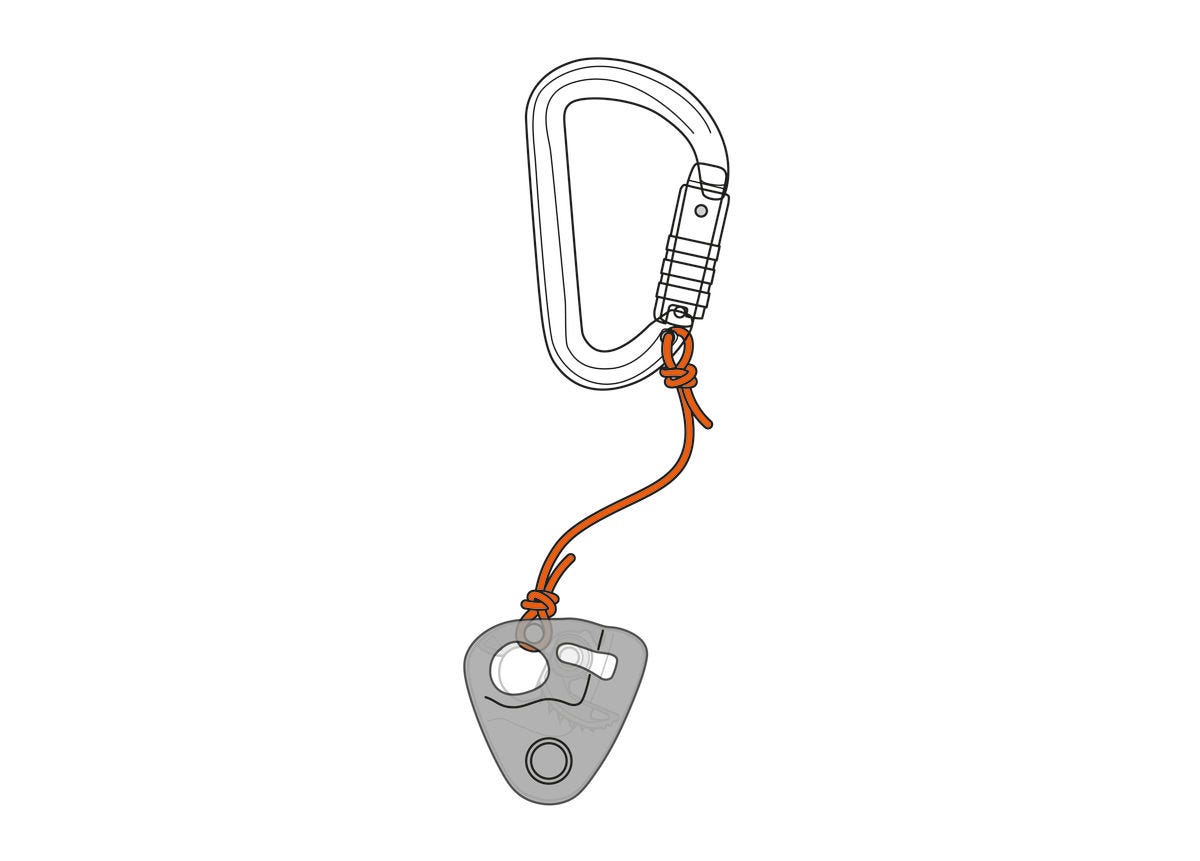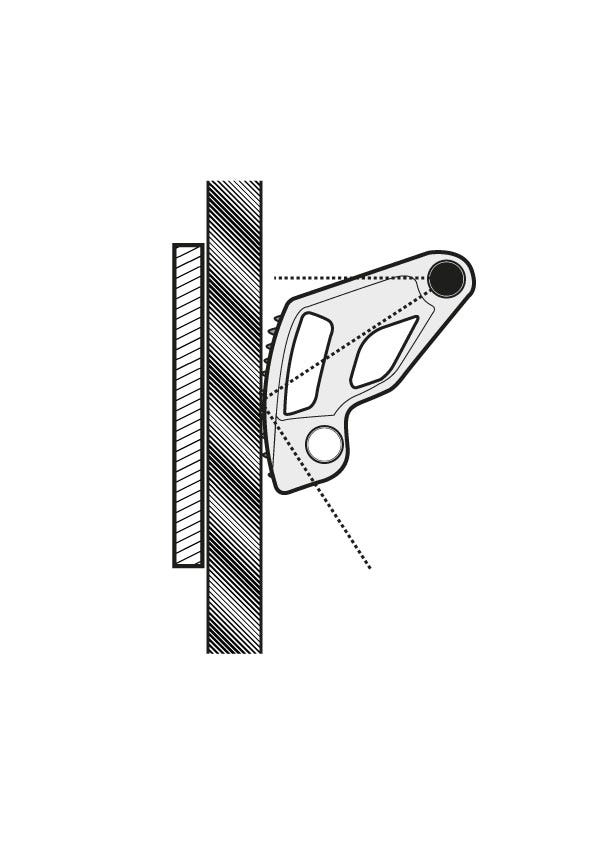Rope Soloing Devices part 1
The following is part one of another chunk on my On the Line book, covering the tricky topic of top rope soloing (TRS). The following parts do not cover specific devices, but rather the qualities of different types of devices, including eccentric, rocker, lever, wedge, as well as Assisted Breaking Devices (ABD), Belay Assist, and non-mechanical.
Devices Types & Styles
All devices used for TRS can be considered as rope clamps, but not all clamp the rope in the same way. Understanding the differences, the pros and cons, is one way to select the right device, and then use it correctly.
Although TRS techniques are built from a matrix of elements: ropes, belays, back-ups, and escape systems, the keystone element is the device you employ to keep you safe, the device which catches you in a fall.
In an ideal world such a device would be designed, manufactured, tested for the purpose of TRS, stocked on a shelf, then purchased, instructions studied, and used with total safe certainty. Unfortunately, this is not the case.
No one has designed, manufactured, or tested such a device, and few would stock them if they did. Instead, manufacturers have designed and manufactured and tested devices for different purposes that in some way align or overlap with the top rope soloist’s, but non to the degree to which it can be stated, “this is the de facto device to use”.
This leaves a conundrum, as well as an endless online debate, around this technical grey area: what device to recommend – that begs questions of legality and redress, and of blow-back and responsibility if someone kills or injures themselves.
Some of the solutions offered by manufacturers are filtered via their legal teams, producing solutions that are one hundred percent safe to recommend, but only halfway to being practical in action.
Then there are the solutions both old and new, shared by climbers both expert and non, in which there is the opposite issue: one hundred percent function, but only halfway safe.
I myself have tended to go down this latter route in the past, both employing and recommending the systems I was taught at the beginning of my own climbing life, the Petzl Shunt, which had served me and others well, well, most of the time.
But fundamentally there are no TRS devices that can be recommended by me or anyone else, only devices that can be employed by a skilful and careful climber who has studied the device’s pros and cons and failure modes.
Fundamentally, any device you may wish to use will void its warranty on being used.
In this section of the book, I will first cover the primary device types: eccentric, level, rocker, wedge, ABD, and non-mechanical. This allows me to first explain the mechanical strengths and weaknesses of each type of device, as this will be vitally important in device selection and correct implantation in your system.
I will then cover the small under of stand-out devices on offer, as well as devices commonly used that have issues.
Eccentric
The eccentric rope clamp would be best defined as your classic handled ascender, or jumar, used in both climbing, caving, and rope access. When you think of a rope ascender, this is what you’re probably visualising.
Eccentric devices are now most well established in mainstream climbing in the form of micro, or emergency ascenders, such as Wild Country Ropeman, Kong Duck and Climbing Technology Rock N Lock, but also form the mechanism within progress capture pulleys, such as the Petzl Micro and Nano Traxion.
Definition of an eccentric rope clamp
An eccentric rope grab features a sprung, toothed, stainless steel jaw that rotates around 45 degrees on a high-strength axle, the axle fixed into a stamped or milled alloy frame.
When the user weights the frame, the combination of the jaw’s teeth, spring, and curved camming shape forces the jaw into a position in which it compresses and pinched the rope between itself and the frame, therefore allowing the device to grip the rope and hold it in place.
The jaw is designed to only act as a rope grab in one direction, the direction of load, and so can be moved easily in the other, which is generally against the load. This allows the jaw to capture progress both in ascent or when pulling a load through a pulley.
The eccentric jaw is not loaded directly, but via the frame, which will feature a clip-in point for a karabiner, and may also feature a handle in order to aid progress (classic handled ascender), or a lifting point, used to help progress the device along a rope (Petzl Croll).
Due to the jaw not being directly loaded, it requires some assistance when moving from loaded, to unload, and back to loaded, otherwise, it would simply swing out of position and fail to grab the rope (you would have to manually press it into position as you weight the frame).
By employing a light spring inside the jaw, the jaw can be kept in contact with the rope at all times, unless the user wishes to pull the jaw away from the rope, doing so with a thumb or finger (useful for down climbing a rope, or when cleaning).
The spring itself is not strong enough to give total assurance, so security and traction are assured by a curved jaw face, but more importantly, by teeth, grooves or spikes in the face.




